SBVS404A April 2020 – June 2020 TLV4062 , TLV4082
PRODUCTION DATA.
- 1 Features
- 2 Applications
- 3 Description
- 4 Revision History
- 5 Pin Configuration and Functions
- 6 Specifications
- 7 Detailed Description
- 8 Application and Implementation
- 9 Power Supply Recommendations
- 10Layout
- 11Device and Documentation Support
封装选项
机械数据 (封装 | 引脚)
散热焊盘机械数据 (封装 | 引脚)
- DRY|6
订购信息
6.7 Typical Characteristics
at TJ = 25°C with a 0.1-µF capacitor close to V+ (unless otherwise noted)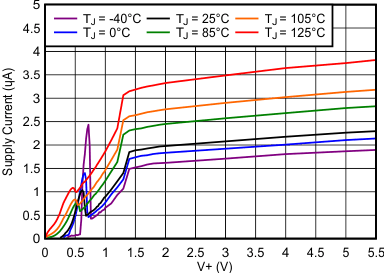
| IN1 = IN2 = 1.5 V |
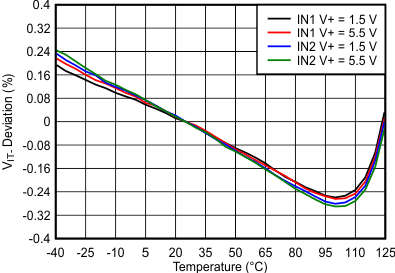
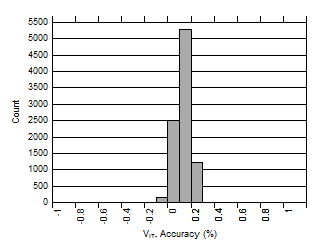
| V+ = 5.5 V |
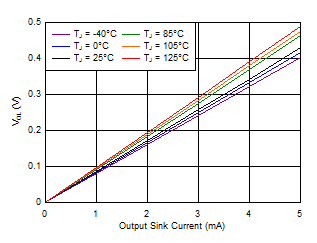
(V+ = 3.3 V)
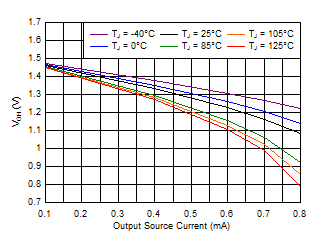
(V+ = 1.5 V)
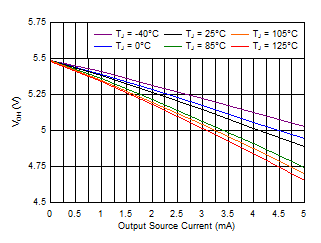
(V+ = 5.5 V)
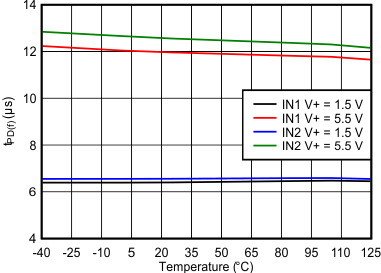
| IN1 = IN2 = 1.3 V to 0 V |
INx Low to Output Low
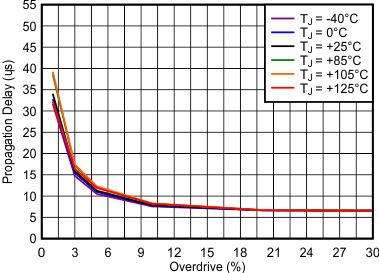
| High-to-low transition occurs above the curve |
(V+ = 1.5 V)
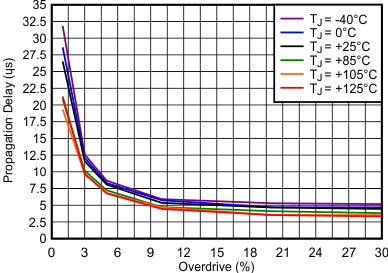
| Low-to-high transition occurs above the curve |
(V+ = 1.5 V)
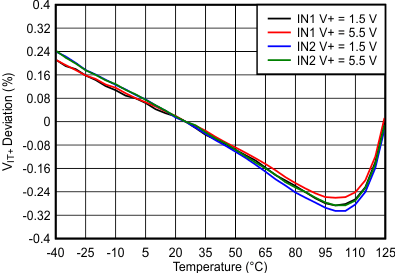
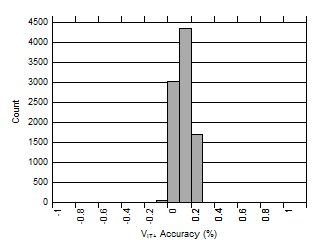
| V+ = 5.5 V |
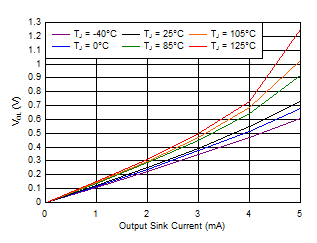
(V+ = 1.5 V)
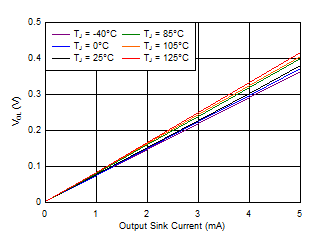
(V+ = 5.5 V)
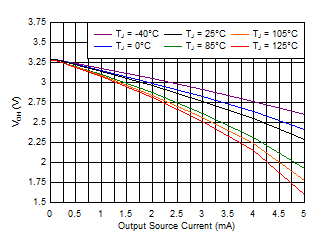
(V+ = 3.3 V)
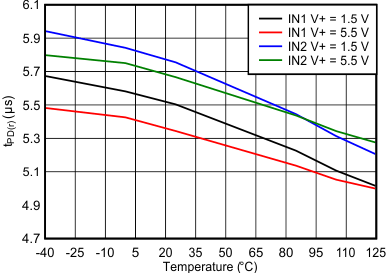
| IN1 = IN2 = 0 V to 1.3 V |
INx High to Output High
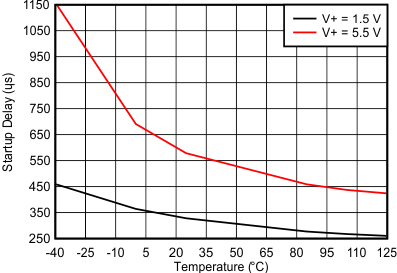
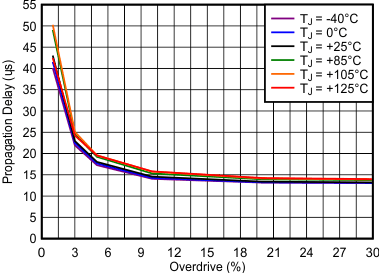
| High-to-low transition occurs above the curve |
(V+ = 5.5 V)
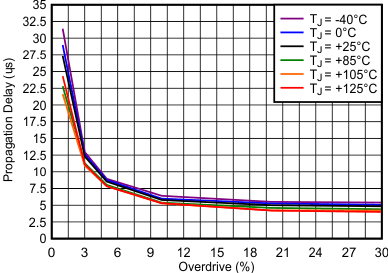
| Low-to-high transition occurs above the curve |
(V+ = 5.5 V)